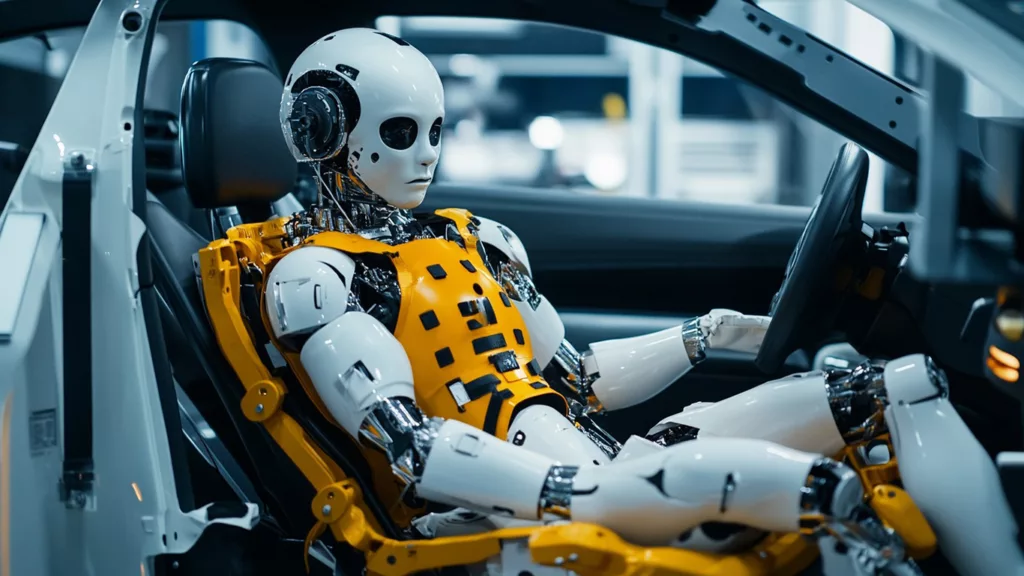Crash test dummies are marvels of engineering, designed to mimic the human body during collision scenarios. These indispensable tools in automotive safety testing are equipped with a plethora of advanced sensors, each meticulously designed to collect critical data during an impact. Understanding what sensors are in a crash test dummy helps us appreciate the depth of technology involved in creating safer vehicles.

Introduction
Safety is a top priority in automotive design, and crash test dummies serve as silent heroes in achieving this goal. These lifelike mannequins are equipped with cutting-edge sensors that collect vital data during simulated collisions. By studying what sensors are in a crash test dummy, automotive engineers can refine vehicle designs, improving safety features like airbags, seatbelts, and structural integrity.
What Sensors Are in a Crash Test Dummy?
Crash test dummies are complex, outfitted with an array of sensors to replicate human responses during an accident. From force sensors to gyroscopes, these tools gather intricate data that mimics the physical effects of a collision on the human body. With each sensor playing a unique role, the insights gained contribute directly to advancements in vehicle safety.
Force Sensors
Force sensors are strategically placed on critical areas like the chest, head, and limbs to measure impact forces. These sensors help engineers understand the distribution of collision energy across a dummy’s body, revealing potential injury points.
Accelerometers
Accelerometers record acceleration and deceleration forces experienced during a crash. Positioned throughout the dummy, these sensors offer a comprehensive view of how the body moves under collision forces, crucial for evaluating safety restraints.
Load Cells
Load cells measure the loads exerted on specific dummy parts, such as the neck and legs. This data is invaluable in assessing structural failures and potential injuries during impacts.
Pressure Sensors
Pressure sensors, located in the abdomen or chest, monitor internal pressures within dummy cavities. They are critical in analyzing how seatbelts and airbags distribute force during a crash.
Temperature Sensors
Some tests require temperature sensors to ensure accuracy when environmental factors, like heat, might affect sensor readings or material properties.
Gyroscopes
Gyroscopes record angular velocity and rotational motion, offering insights into how the body might twist during a rollover or side collision.
Deflection Sensors
Deflection sensors measure chest compression or rib deflection under pressure. This helps evaluate the effectiveness of seatbelt systems in preventing chest injuries.
Neck Injury Sensors
Neck injury sensors monitor loads and motions that could lead to whiplash or more severe neck injuries, particularly during rear-end collisions.
Pelvic Force Sensors
Pelvic force sensors evaluate forces exerted on the pelvis during side or rear impacts. These sensors are particularly relevant for understanding injuries in specific crash scenarios.
Abdominal Sensors
Abdominal sensors capture data about forces applied to the stomach area, helping improve lap belt and seatbelt positioning.
Head Impact Sensors
Head impact sensors track accelerations and forces that could lead to concussions or other brain injuries. These sensors are key to enhancing head protection systems.
Spine Sensors
Spine sensors measure compression and motion along the dummy’s spinal column, providing data critical for rear-impact collision analysis.
Leg and Foot Sensors
Leg and foot sensors capture forces that affect lower limbs, helping manufacturers improve legroom design and airbag deployment in the footwell.
Sensors for Airbag Analysis
Crash test dummies are equipped with sensors to analyze airbag deployment and interaction. These ensure that airbags deploy at the right time and with the right force.
Child Dummy Sensors
Child dummies are fitted with specialized sensors to replicate smaller bodies, helping design child restraints and booster seats.
Data Transmission Systems
All sensors in a crash test dummy are connected to data acquisition systems that collect, transmit, and analyze the information in real-time.
Calibration of Sensors
Calibration is critical to maintaining sensor accuracy. Every sensor must be fine-tuned before use to ensure it provides reliable, repeatable data.
Customization of Crash Test Sensors
XJCSENSOR specializes in customizing crash test sensors for specific testing needs, offering tailored solutions for unique scenarios.
Role of XJCSENSOR in Crash Testing
XJCSENSOR is a trusted provider of advanced sensors, empowering manufacturers with precise tools for automotive safety testing. Our technology is designed to enhance testing accuracy and reliability.
Real-World Applications
Data from crash test sensors directly influences the design of seatbelts, airbags, and crumple zones, ultimately making vehicles safer for everyone.
Global Safety Standards and Sensors
Crash test sensors are designed to meet stringent safety regulations, ensuring compliance with global standards like ISO and NCAP ratings.
The Future of Crash Test Sensors
With advancements in AI and IoT, the future of crash test sensors looks promising, with smarter, more adaptive systems on the horizon.
FAQs
What is the purpose of sensors in a crash test dummy?
How are crash test sensors calibrated?
What types of sensors are most common in crash test dummies?
How do child crash test dummies differ from adult ones?
Can sensors in crash test dummies be customized?
Why are gyroscopes used in crash testing?
Conclusion
Crash test dummies, with their intricate network of sensors, are vital in advancing automotive safety. By leveraging data from these sensors, manufacturers can design vehicles that protect occupants better during collisions. XJCSENSOR remains at the forefront of sensor technology, offering customized, high-precision solutions to drive safety innovations.

